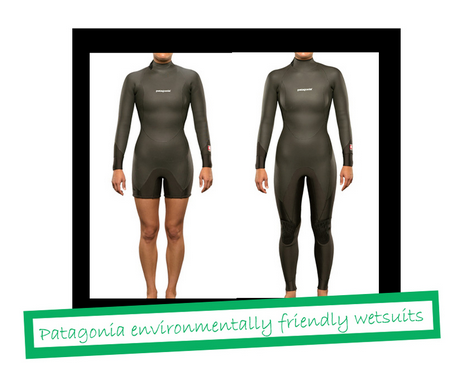 US-based Yulex sent me this press release this weekend regarding their project with sports/outdoors products manufacturer Patagonia on a guayule rubber-based wetsuit as an alternative for the use of neoprene materials.
US-based Yulex sent me this press release this weekend regarding their project with sports/outdoors products manufacturer Patagonia on a guayule rubber-based wetsuit as an alternative for the use of neoprene materials.
The blog first heard about guayule (pronounced why-YOU-lee) in 2009 when the US Department of Agriculture (USDA) put out an article about their research with this plant as a source of natural latex ideal for making high-quality gloves, medical devices and even as biofuel with the use of its waste stems and branches (bagasse).
Guayule shrubs can first be harvested as early as 2 years after planting. The shrubs typically grow at least 3 feet high and several feet across, and sliced just above the ground, they regrow vigorously and are ready to harvest again in another year and a half or so.
According to Yulex, Patagonia has just launched a wetsuit that contains 60% renewable content using Yulex’s biorubber material made from guayule and the rest from petrochemical-based materials. The guayule rubber has allowed Patagonia to use as little as neoprene as possible, the company said.
“Our goal is to have the formula be 100% plant based, but we feel that for now this new material is a big enough step forward to let the world know it is possible to buy something cleaner. This is just the first step; it’s our hope that other brands see this as interesting and join the effort to innovate and implement alternatives to traditional neoprene that is used in wetsuits.” – Patagonia
The new suits will be available in Japan only starting Spring 2013 but a global rollout is expected to soon follow.
Early this year, Yulex has also partnered with Cooper Tire & Rubber Company in the development of guayule polymers and resins for tire applications. Tire companies worldwide have been very active in developing alternatives to current rubber chemicals as both petroleum-based rubbers and natural rubbers market have always been very volatile in terms of supply and pricing.
In fact, Cooper Tire, Yulex and their consortium of companies and universities have been awarded a $6.9m grant from the USDA this July for a four-year research on developing enhanced manufacturing processes, testing and using guayule natural rubber as a strategic raw material source for use in tires, as well as evaluating the waste bagasse of the guayule plant as source of biofuel for the transportation industry.
Early this year, US tire company Bridgestone also launched its guayule project with a pilot farm (281-acre site in Eloy, Arizona) and rubber process research center in Mesa, Arizona.
The research farm will include a multi-purpose office/laboratory building, greenhouses and a farming operation that is positioned to optimize guayule as a commercial crop that produces tire-grade rubber and complements the existing agricultural landscape. Groundbreaking is anticipated in the third quarter of 2012.
The process research center will be home to a staff of 32 researchers and technicians and to the process that converts the guayule shrub into tire-grade rubber. Groundbreaking for the research center is planned to take place in early 2013. The facility is expected to be fully operational in 2014, with trial rubber production starting in 2015.
I also wanted to insert here that Bridgestone is also working on other renewable-based alternatives to currently commercialized rubber chemicals. In May this year, the company announced its joint development partnership with Ajinomoto on biomass-based isoprene, and the use Russian dandelion as another possible source of tire-grade rubber.
Bridgestone has been conducting testing on Russian dandelion at its laboratories in Akron, Ohio, and Tokyo, Japan, since this summer, and the company plans a larger scale testing in 2014.
Back to guayule, the blog is not sure how much of the perennial shrub is currently planted (and harvested) in southwestern US and northern Mexico but there sure are plenty of increasing interest for this rubber plant.
The fact is guayule plant can also be a potential high source of sesquiterpene called farnesene. In June this year, the Ohio State University (OSU) along with its partners, Kansas State University, energy crop feedstock developer Chromatin, and renewable chemical firm Allylix, has received a $5.7m grant from the US Department of Energy to genetically engineer guayule to produce farnesene molecule inside the plant.
OSU said guayule is a good model as it already produces and stores a lot of hydrocarbons in the form of resin in its stems and branches.
FOLLOW ME ON THESE SPACE
This is just the kind of thing I’ve been searching for! Fantastic and thanks very much!
Posted by Maurice Gering | December 5, 2012, 3:53 amFantastic and very interested in this bio material .Is this bio-rubber commercialize and can be sell to end-user?
Posted by Vincent yuen | December 5, 2012, 11:16 pmHi Vincent,
I can send you Yulex’s contact information if you want to talk to them further about guayule. You can send me an email at Doris@greenchemicalsblog.com.
Posted by Doris de Guzman | December 6, 2012, 3:29 am